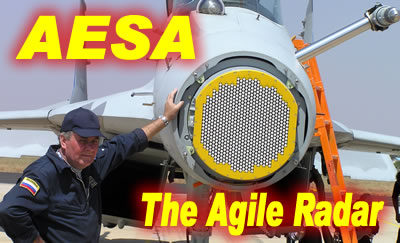Start < Page 1 of 5 >
AESA radars offer significant gains in reliability. By focusing power at specific directions, the pilot can gain more detection range providing “first detect” for air-to-air engagements, enabling first shoot/first kill by missiles fired Beyond Visual Range (BVR) mode. The longer standoff range also allows more time for persistent target observation, information sharing, tactical analysis and commander assessment before critical decisions are made.
AESA radars are emitting not only radar signals, but can also be employed for non traditional ISR, as well as electronic attack. For example, some of the elements can transmit and receive signals modulated with datalink waveform, transferring large amounts of data (such as live video or aerial imagery) over high bandwidth datalinks. Similar techniques can be used for electronic attack, to jam or deceive electronic systems operated by enemy forces.
The mechanical scanning systems used in previous systems were prone to failures, which grounded the entire aircraft. The new systems use solid-state technology and electronic scanning, to replace the mechanical systems but also introduce multiple elements to replace the single channel design of previous systems. Therefore, AESA radars can sustain certain degree of failure without grounding the aircraft or disabling the entire radar system. Furthermore, when designed with modular approach, AESA radars can be gradually upgraded, by replacing the solid-state receive/transmit modules based on Gallium-arsenide semiconductors technology with more advanced elements, thus significantly improving performance.
Read additional parts of the article:




















